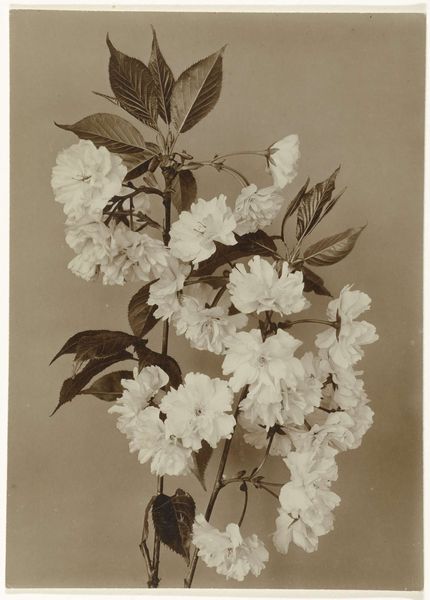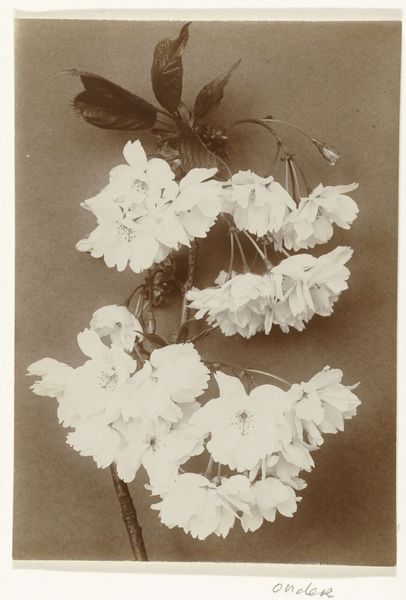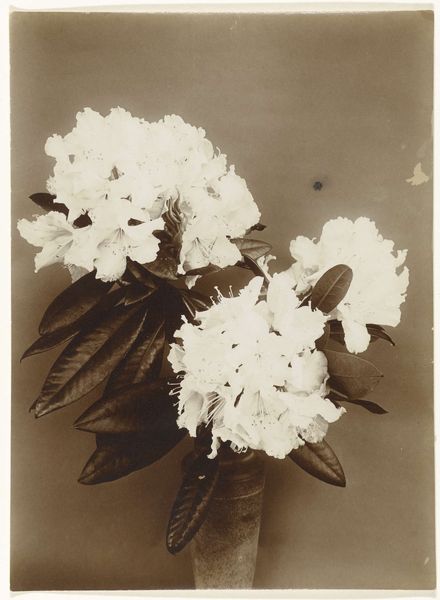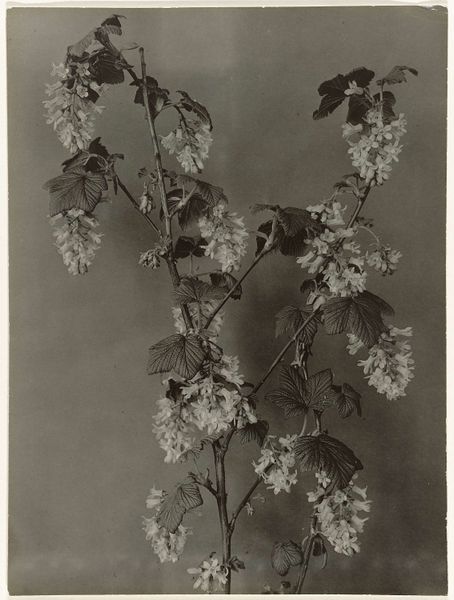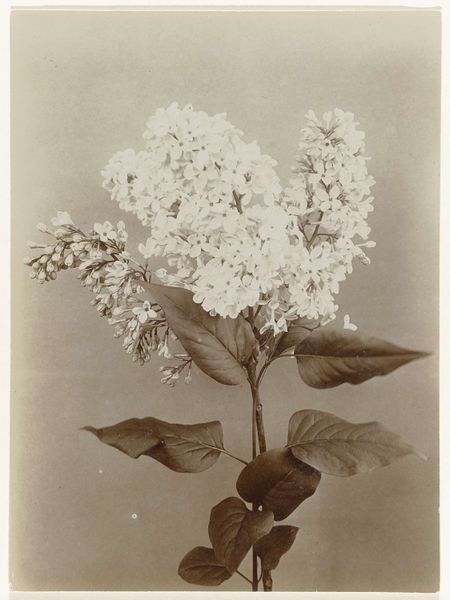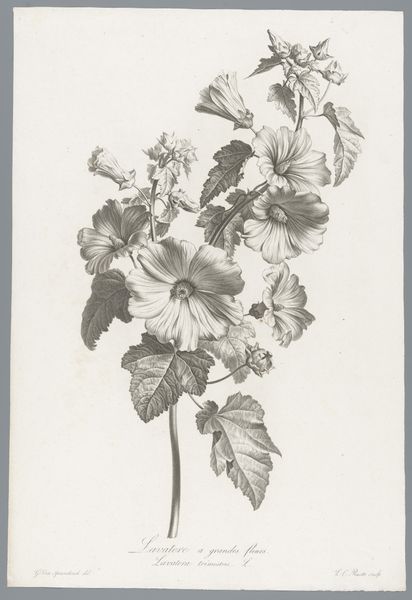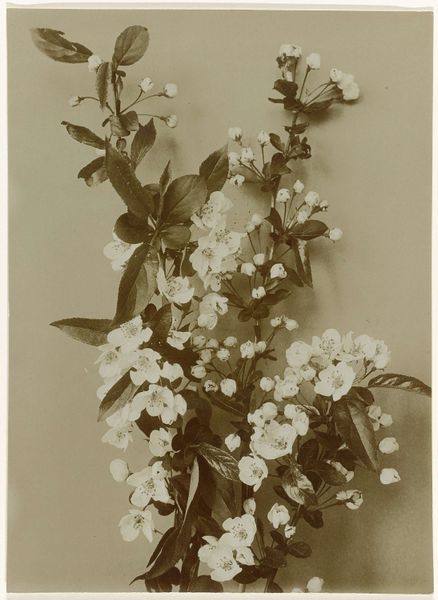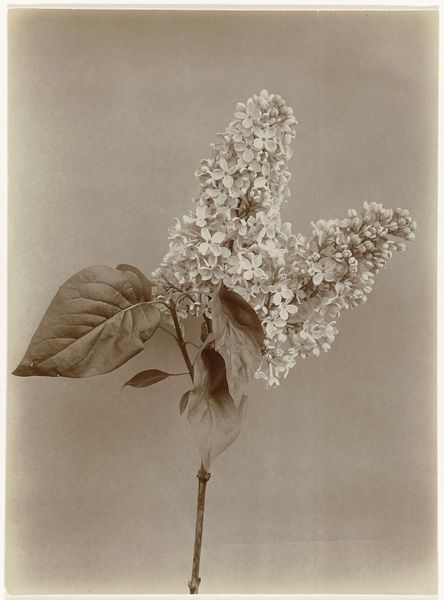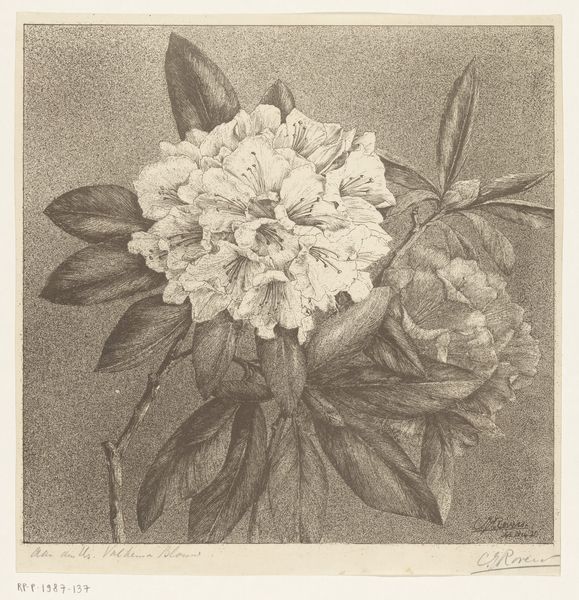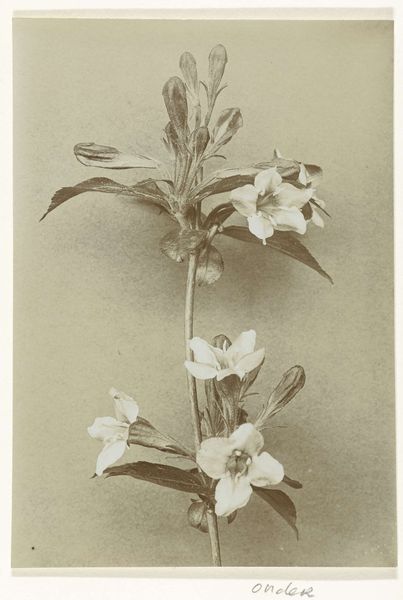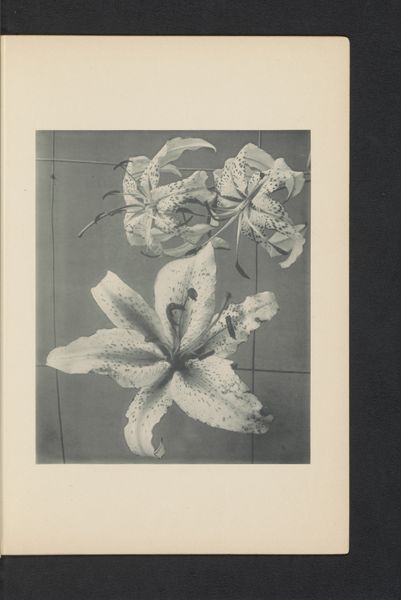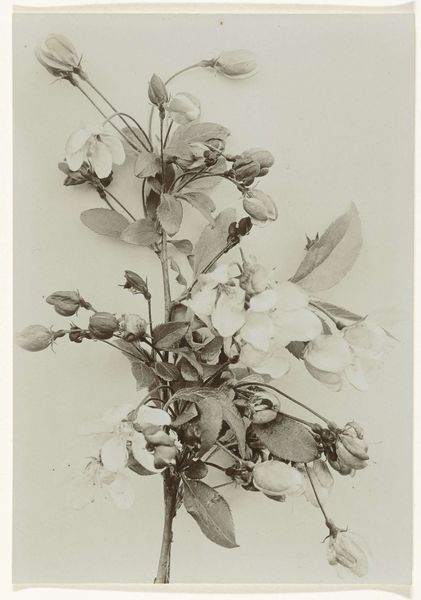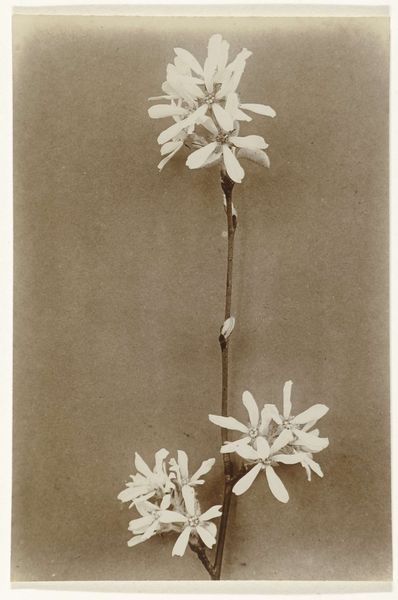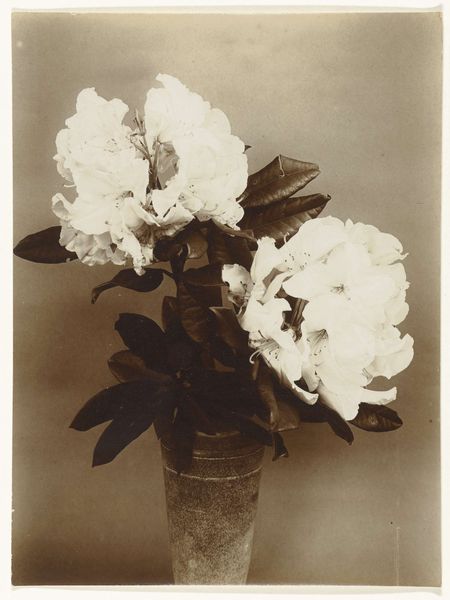
Dimensions: height 164 mm, width 117 mm
Copyright: Rijks Museum: Open Domain
Editor: We're looking at a photograph by Richard Tepe, "Tak van een sierkers," which translates to "Branch of a Flowering Cherry," made sometime between 1900 and 1930. It's such a delicate image. The sepia tone gives it a nostalgic, almost dreamlike quality. What strikes you about this piece? Curator: I'm drawn to how Tepe uses the flowering cherry branch as a powerful symbol. In many cultures, the cherry blossom, or sakura, represents the ephemeral nature of life. Knowing this photograph was created during a period of immense social and technological change adds another layer to that symbolism, doesn't it? Do you notice how the blossoms, although beautiful, seem to be caught in a moment of transient beauty? Editor: Yes, absolutely. There's a fragility to it, like the blossoms could fall at any moment. It reminds me of memento mori imagery, though less overt. Curator: Precisely! Consider the potential for psychological weight. It reflects on how things fade and memory shifts, and connects deeply to universal themes about life’s cyclical nature. Tepe's composition freezes a very specific branch in a singular moment; can you sense how a photographic medium adds gravity? Editor: I see what you mean. Photography makes the scene real, rather than allegorical, and adds depth. I appreciate how you brought out the deeper meaning behind such a simple image. Curator: And I'm enlightened by your openness in tracing memory across visual metaphors! I think both of us together learned to see more today, finding meaning by noticing what shifts.
Comments
No comments
Be the first to comment and join the conversation on the ultimate creative platform.
